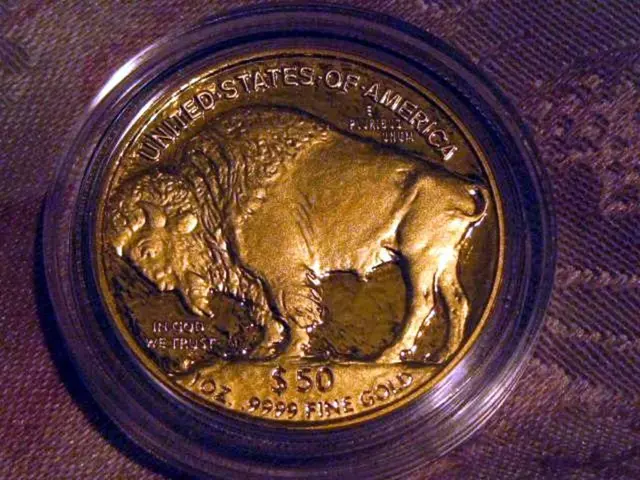Pursuing financial investments in ETFs focusing on sustainability, while also backing initiatives for environmental protection, climate action, and social welfare projects.
Investing in a greener future has never been easier, with a growing number of Sustainable Exchange-Traded Funds (ETFs) available for investors. These ETFs, like their conventional counterparts, track a stock index but only include companies that meet specific criteria set by the fund.
Leading Sustainable ETFs of 2025
The best sustainable ETFs of 2025 have demonstrated impressive returns while adhering to Environmental, Social, and Governance (ESG) criteria. Here are some top performers:
- Stance Sustainable Beta ETF (CHGX): With a 1-year return of about 71.86%, this ETF stands out for its strong sustainable beta strategy.
- WisdomTree China ex-State-Owned Enterprises Fund (CXSE): Offering a return of 42.12%, this ETF focuses on companies with improved governance by excluding Chinese state-owned enterprises.
- Franklin Responsibly Sourced Gold ETF (FGDL): With a growth of 39.02%, this ETF blends ESG concerns with precious metals exposure.
- Nuveen Winslow Large-Cap Growth ESG ETF (NWLG) and Nuveen ESG Large-Cap Growth ETF (NULG): Both of these ETFs have around 23-24% returns, emphasizing large-cap growth companies screened for ESG standards.
Clean Energy and Cleantech-Focused ETFs
Sectors aligned with environmental sustainability, such as clean energy and cleantech, have shown strong recent gains. Notable examples include:
- ProShares S&P Kensho Cleantech ETF
- Invesco WilderHill Clean Energy ETF
- SPDR Kensho Clean Power ETF, among others focused on renewable energy and electric vehicles.
ESG-focused Indices and ETFs
Indices and ETFs that follow STOXX ESG Leaders, ESG+, and ESG Target strategies are constructed to optimize ESG profiles while maintaining broad diversification and benchmark alignment. These indices apply rigorous screening for environmental, social, and governance performance, carbon emission intensity, and sector involvement.
Newly Emerging Sustainable ETFs
Newly launched actively managed sustainable ETFs, like Brown Advisory Sustainable Growth ETF (BASG) and Sustainable Value ETF (BASV), are gaining traction. Despite relatively higher fees, these ETFs reflect a trend toward concentrated ESG-focused strategies with professional management.
The Growing Market for Sustainable ETFs
The market for sustainable ETFs is rapidly growing, with half of the currently available ETFs created in the last few years. Providers like VisualVest, Ginmon, WeltSparen, Trade Republic, Quirion, UmweltBank, Scalable Capital, and local savings banks now offer green ETFs.
While sustainability has become a marketing term, investors may not always know which ETFs are truly sustainable. Some critics argue that ETFs like the MSCI World SRI include business sectors like energy companies or automakers, which may not be fully sustainable.
However, several studies suggest that green ETFs do not lag behind their conventional counterparts and can even perform better than their parent index in recent years. To find your optimal ETF, consider using platforms like ETF Comparison.
To buy sustainable ETFs, one needs a securities account, and the most favorable offers are usually available from neobrokers and direct banks. ETF savings plans are particularly popular, where a small amount is invested each month, such as 50 €. The savings rates can also be reduced, suspended, or terminated.
The UmweltBank has launched its own ETF, the UmweltBank ETF, which is a particularly sustainable fund in accordance with Article 9 of the EU Transparency Regulation. Environmental criteria may include companies developing climate-friendly technologies and companies from controversial industries like coal, if they are committed to reducing their CO2 emissions.
Corporate governance criteria may include companies that have profiled themselves in the fight against corruption, practice transparency and openness, and do not engage in anti-competitive practices. Large tech companies like Apple, Amazon, or Facebook have not made it onto the Dow Jones Sustainability Index World Enlarged.
There are no uniform guidelines on what is particularly sustainable, green, or responsible for ETFs. However, the criteria for sustainable ETFs include environmental protection, social standards, and corporate governance.
- In response to the question of what sustainable ETFs to invest in, the top performing ones in 2025, like CHGX, CXSE, FGDL, NWLG, and NULG, have demonstrated impressive returns while adhering to Environmental, Social, and Governance (ESG) criteria and focusing on sectors such as clean energy and cleantech.
- When it comes to finding new ETFs that prioritize sustainability, newly launched actively managedETFs such as BASG and BASV are gaining traction, offering a trend toward concentrated ESG-focused strategies with professional management, despite relatively higher fees.
- In the growing market for sustainable ETFs, UmweltBank's ETF, which follows Article 9 of the EU Transparency Regulation, stands out as particularly sustainable, focusing on companies developing climate-friendly technologies and those committed to reducing their CO2 emissions, as well as corporate governance standards like transparency and openness.




